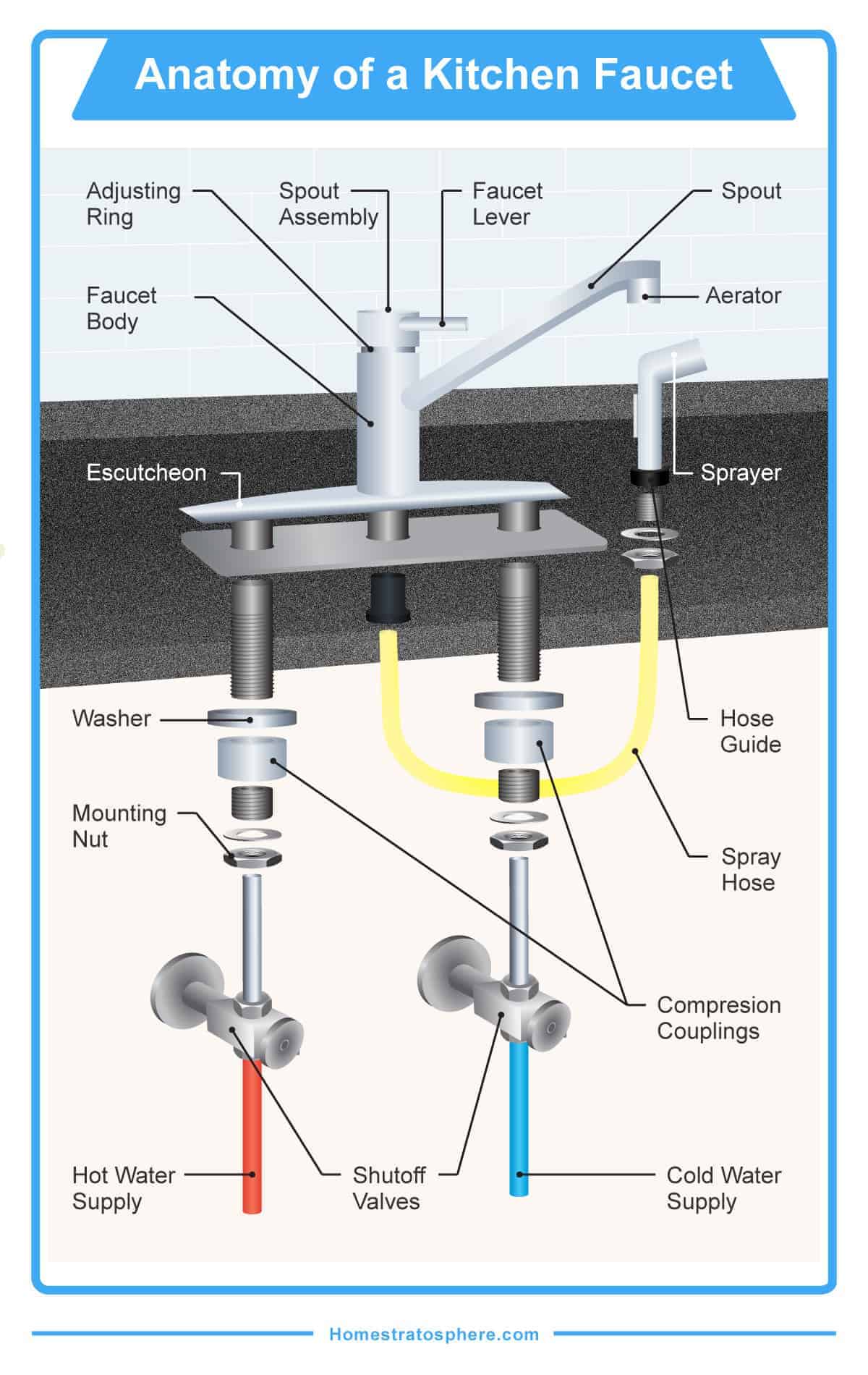
Kitchen faucets have a come a long way, but when it comes to the parts of a kitchen faucet, much of it is the same.
We put together a detailed diagram illustrating the anatomy of a kitchen faucet. See it below.
Anatomy of a kitchen faucet (diagram)

- Faucet Body: A device used for transporting water from a plumbing system.
- Adjusting Ring: A seal that can be made out of various materials and used to ensure that the faucet’s joints are watertight.
- Spout Assembly: Parts used to control the spout.
- Faucet Lever: Lever used to control turn tap on and off.
- Spout: The opening where water flows out of.
- Aerator: Small mesh screens placed on the end of faucets and used to regulate the flow of water into multiple small streams so that the volume of water that flows from the faucet would be significantly reduced.
- Sprayer: Device used to spray water.
- Hose Guide: Literally used to guide the hose for easy watering, prevents the hose from getting caught and protects from scraping.
- Spray Hose: Connects the water supply to the faucet.
- Compression Couplings: Connects two pipes to a fixture or valve.
- Cold Water Supply: The system that allows cold water to be supplied from the main water source to where it is intended to be used.
- Shutoff Valves: Controls the flow of water.
- Hot Water Supply: The system that allows hot water to be supplied from the main water source to where it is intended to be used.
- Mounting Nut: Secures the faucet to the sink.
- Washer: A small flat ring made of either metal, rubber, or plastic and used to attach the aerator to the faucet stems.
- Escutcheon: A flat piece of metal used to protect and hide away the hole for the pipe or valve.
VIDEO: How to install a kitchen faucet

Related: Single-Handle Faucet | Double-Handle Faucet | Sensor Faucet | Bridge Faucet | Widespread Faucet | The History and Evolution of the Kitchen Faucet | Our Picks for Top 10 Kitchen Faucets for Your Kitchen Sink | How to Fix a Leaky Faucet| Best Online Faucet Stores | Types of Kitchen Sinks






